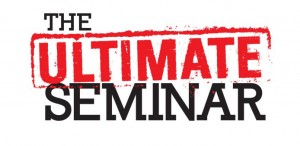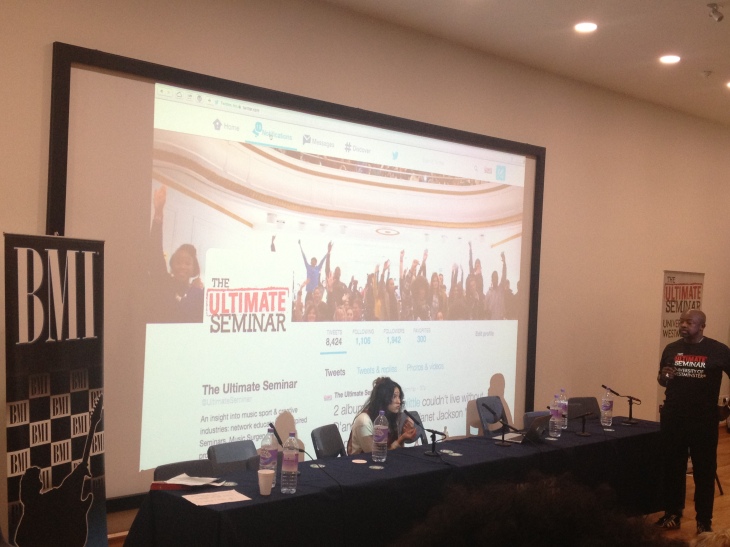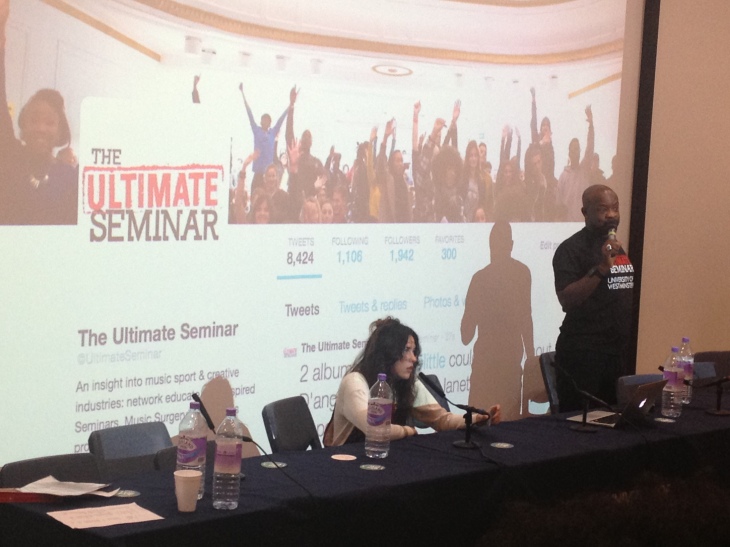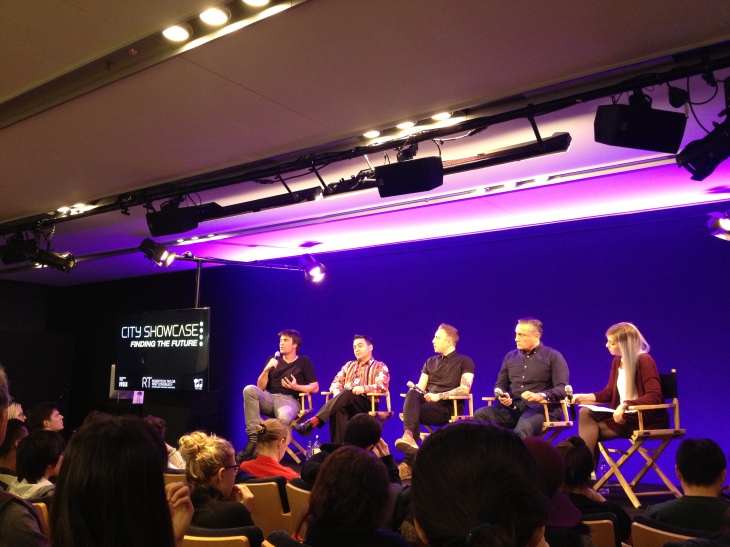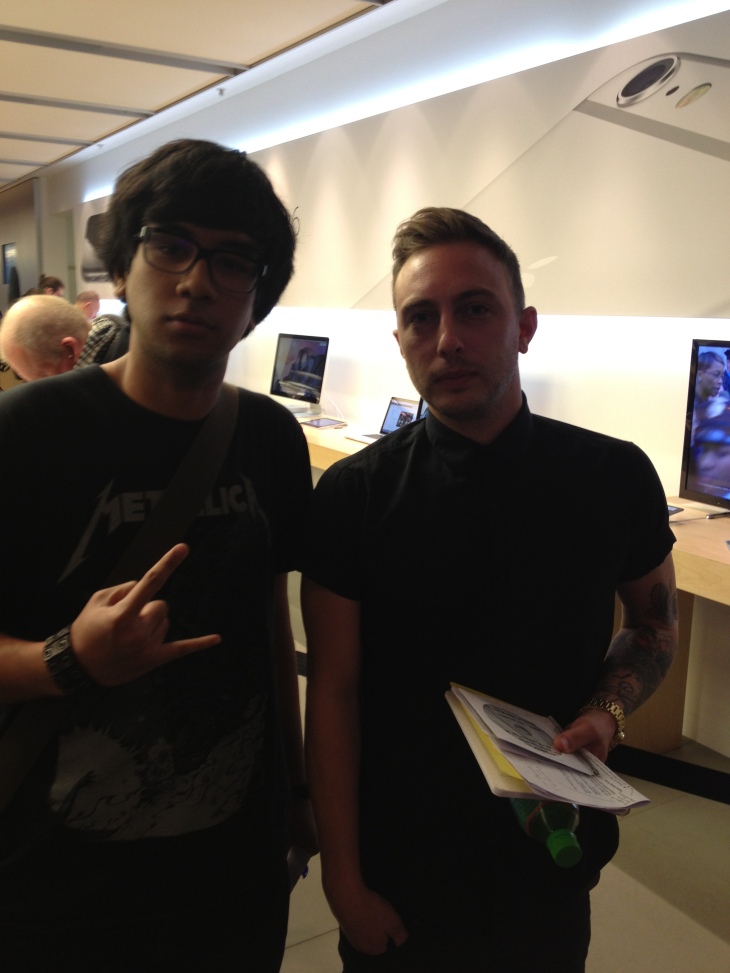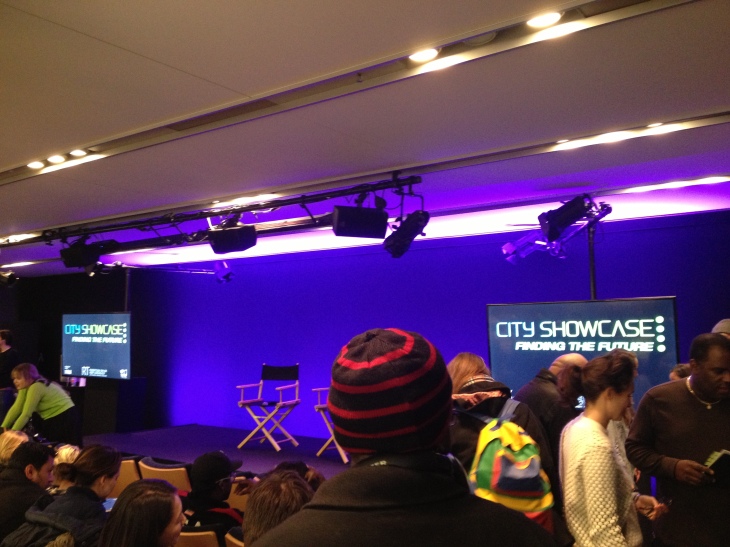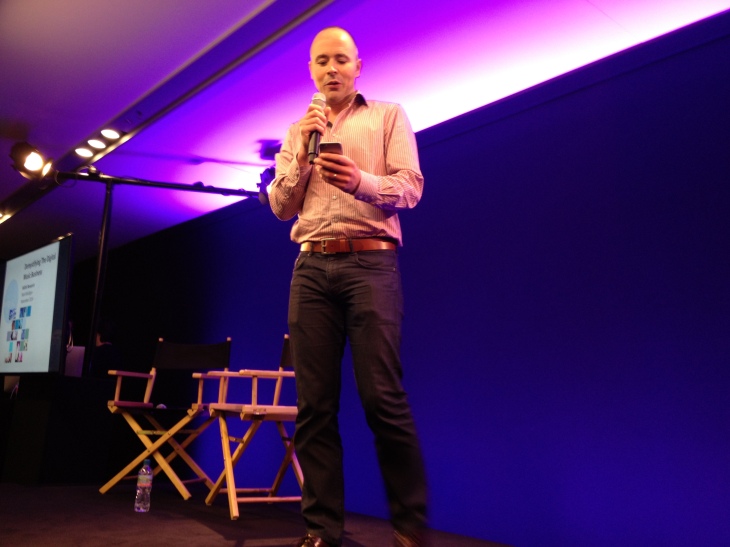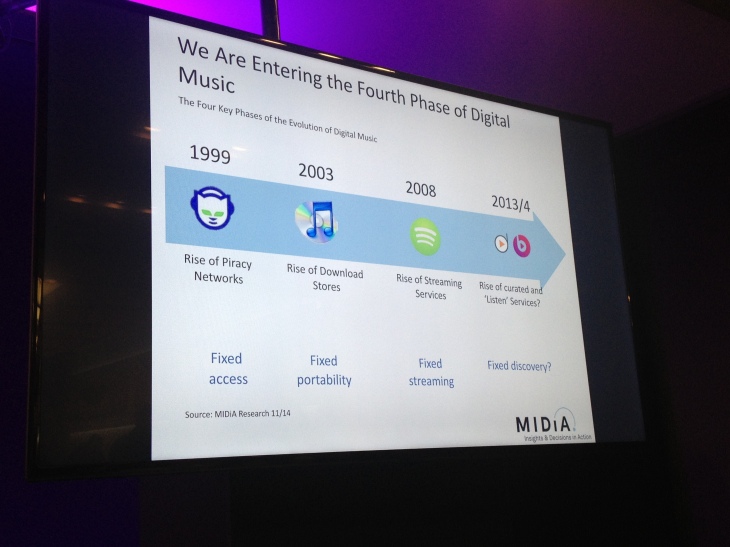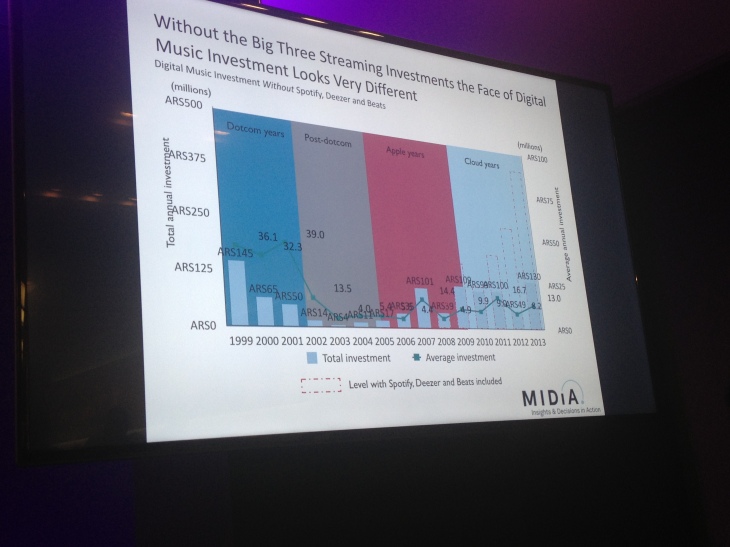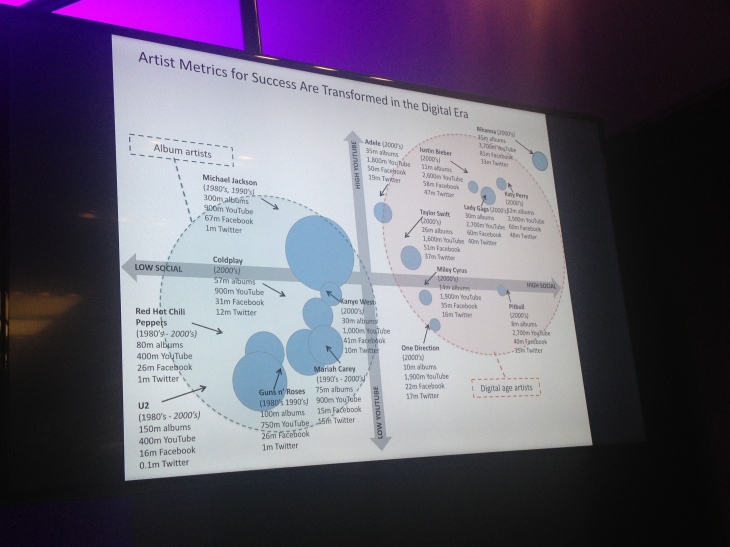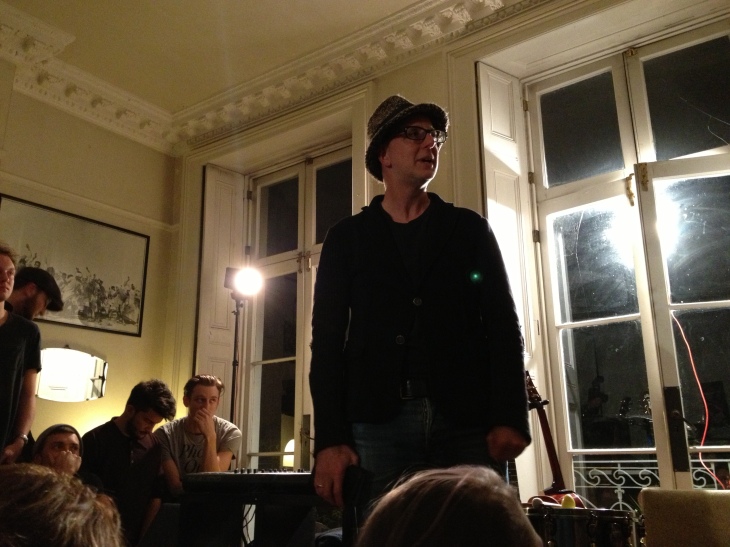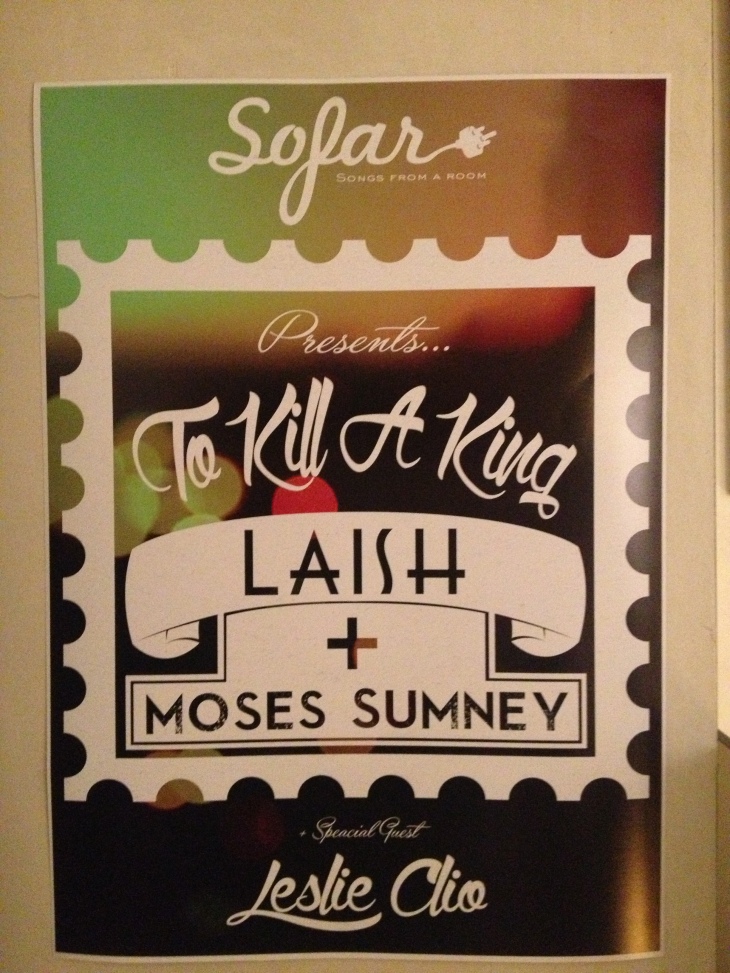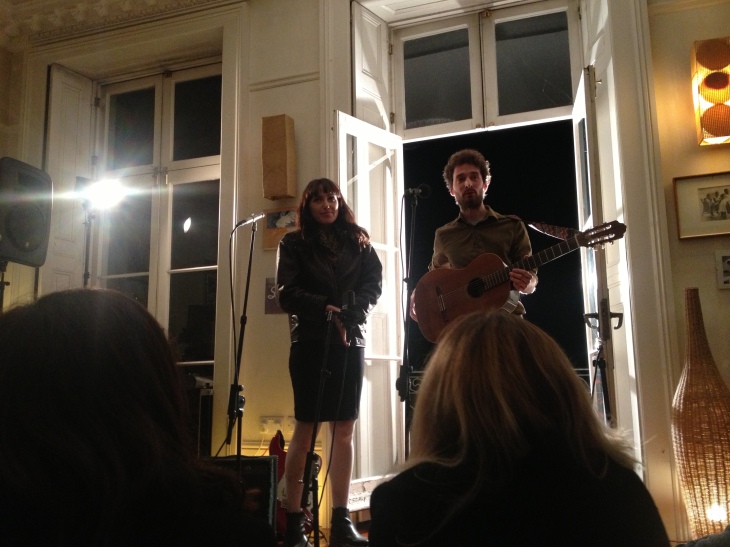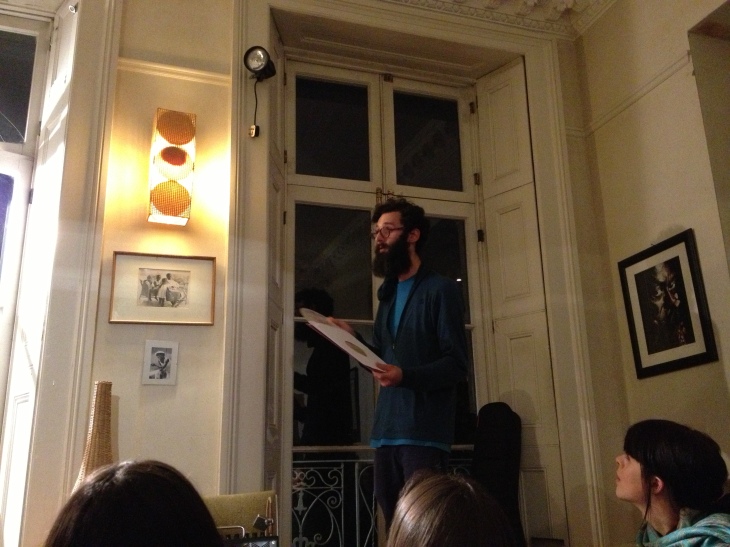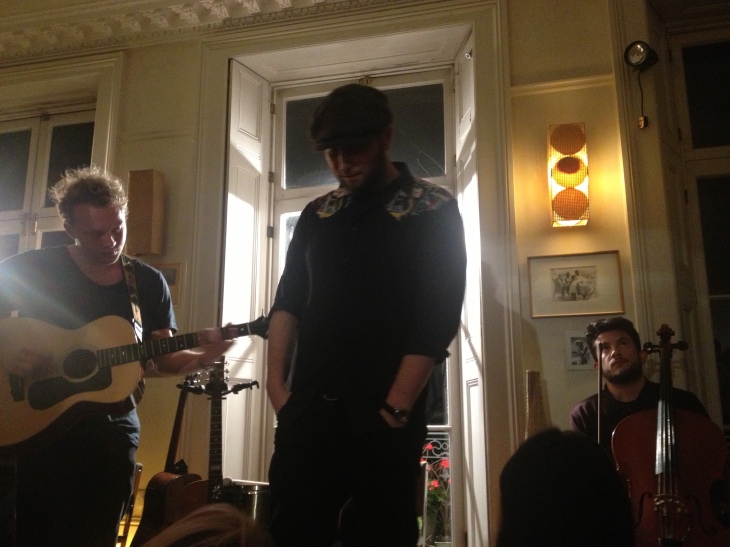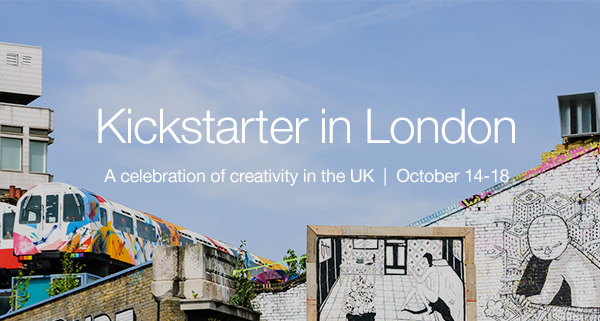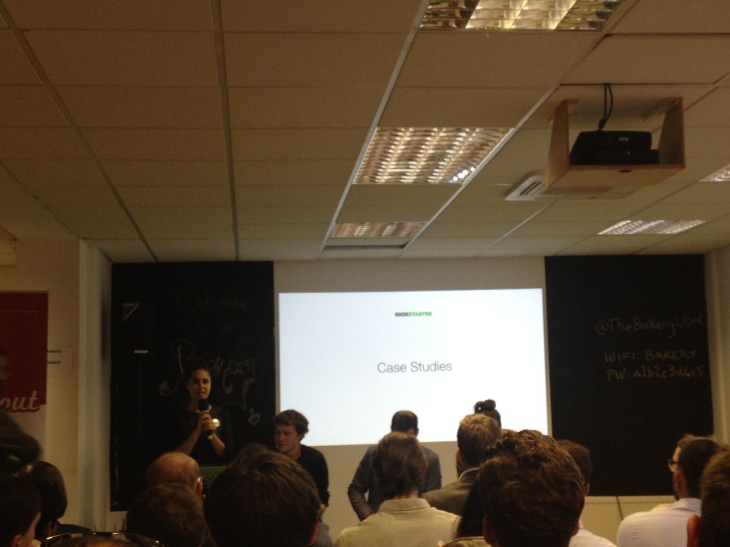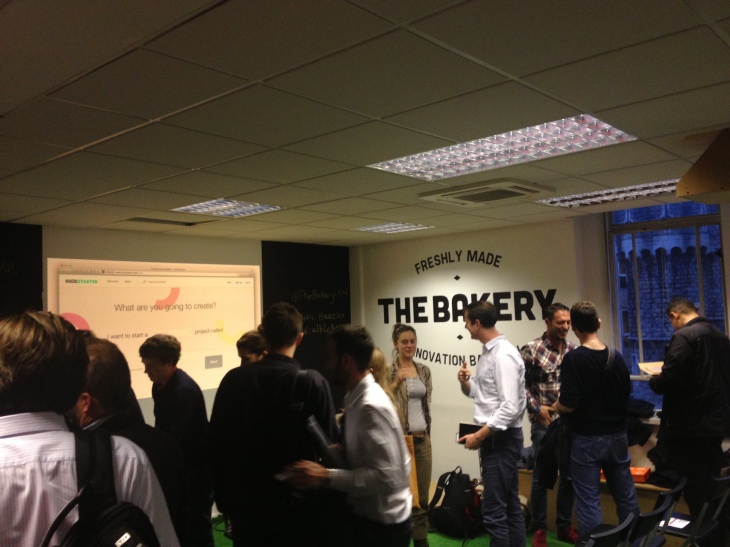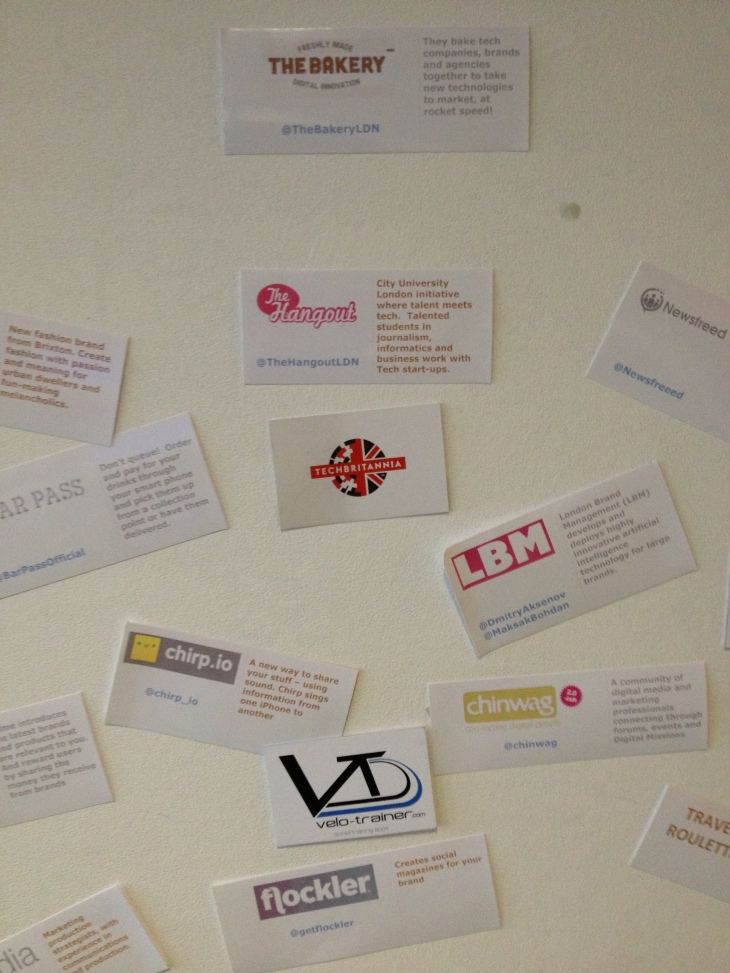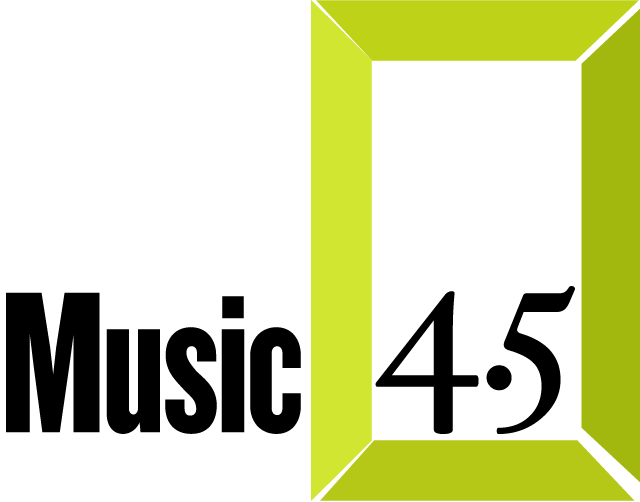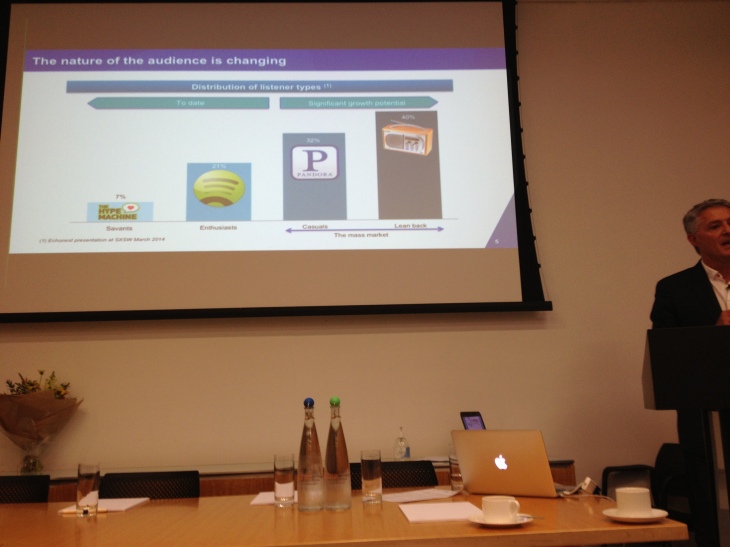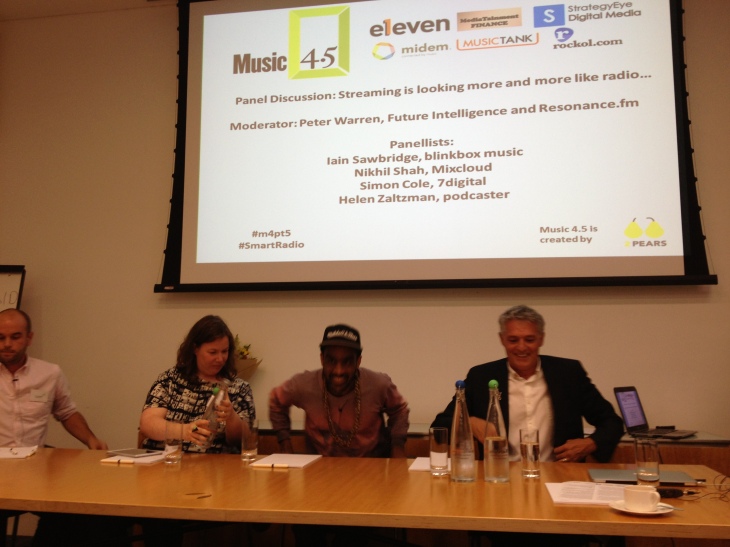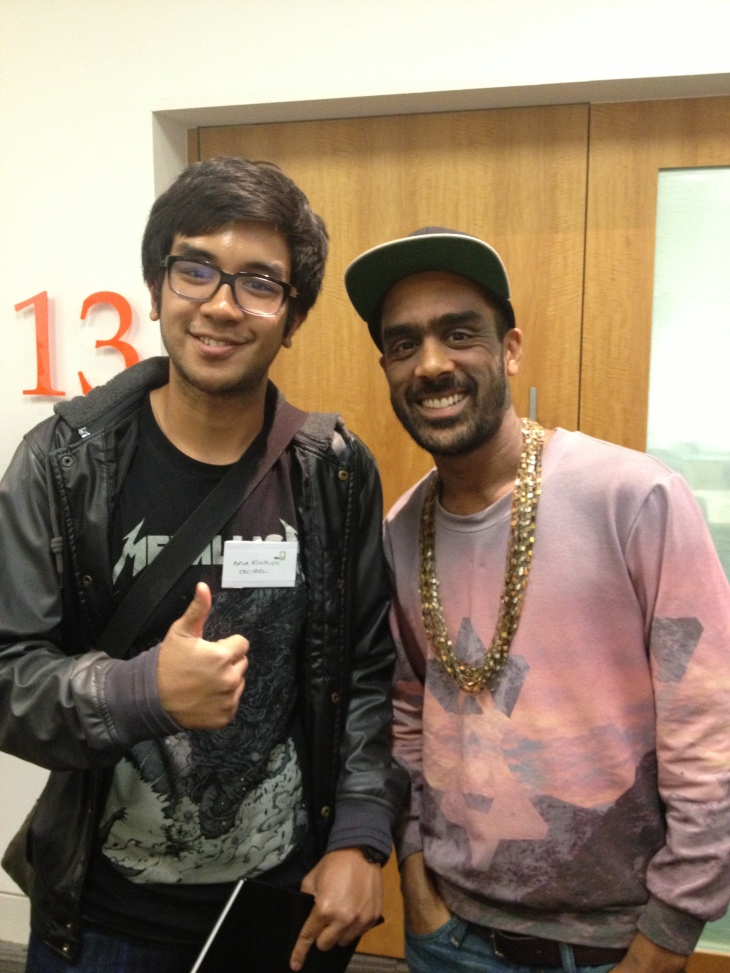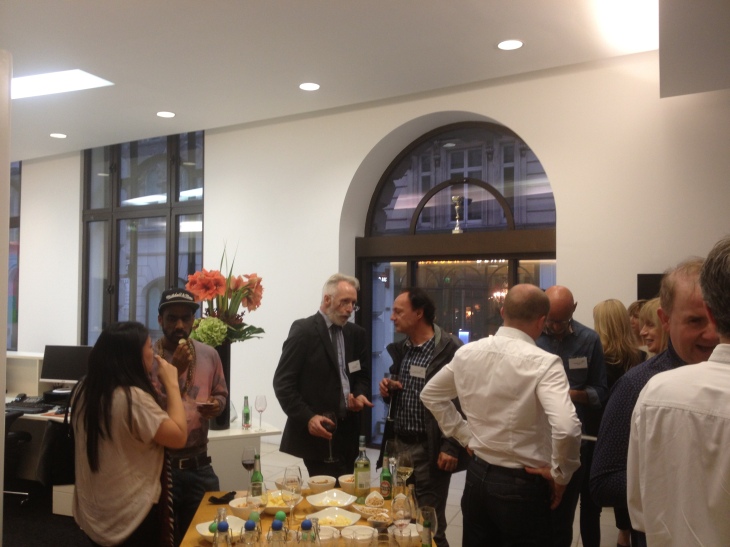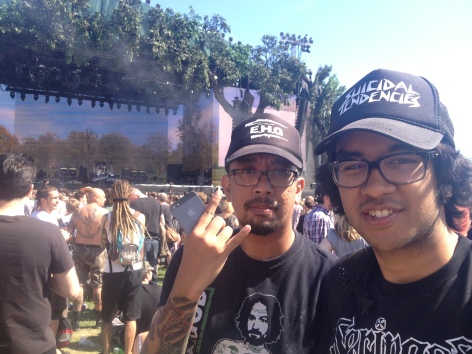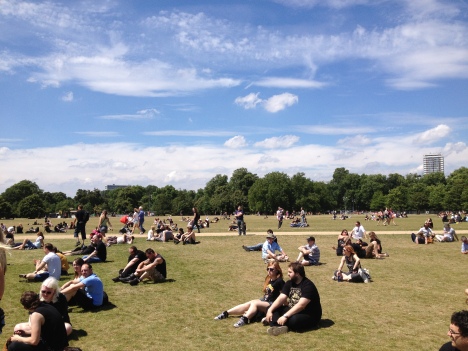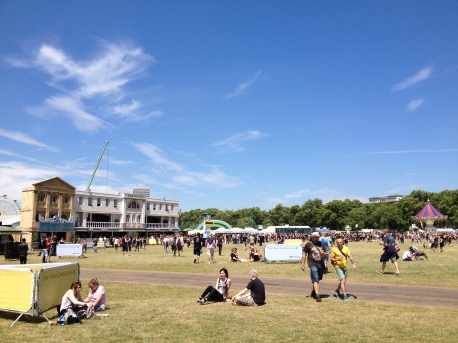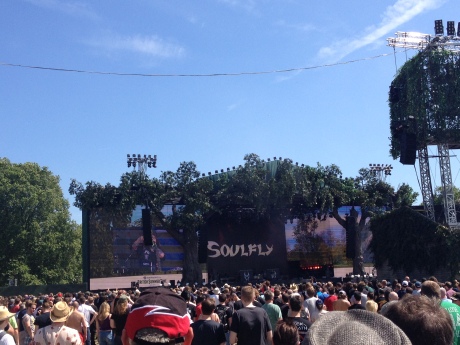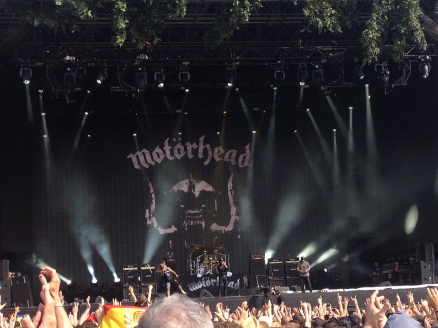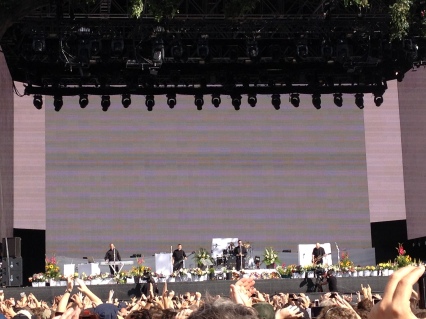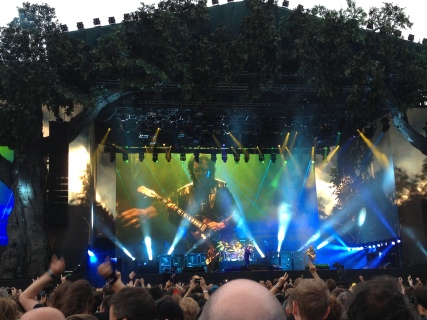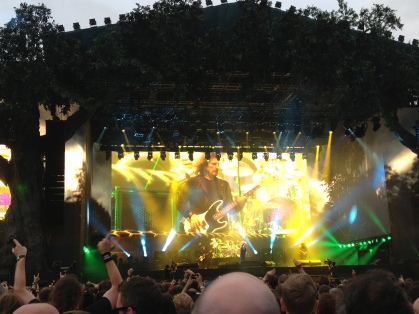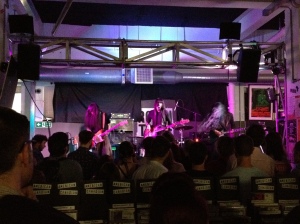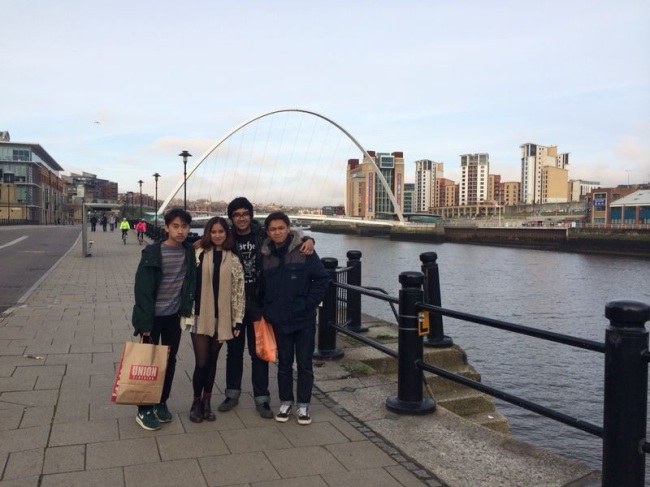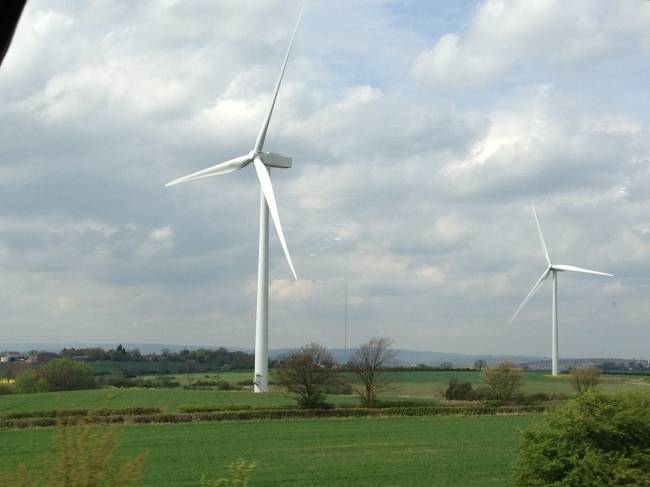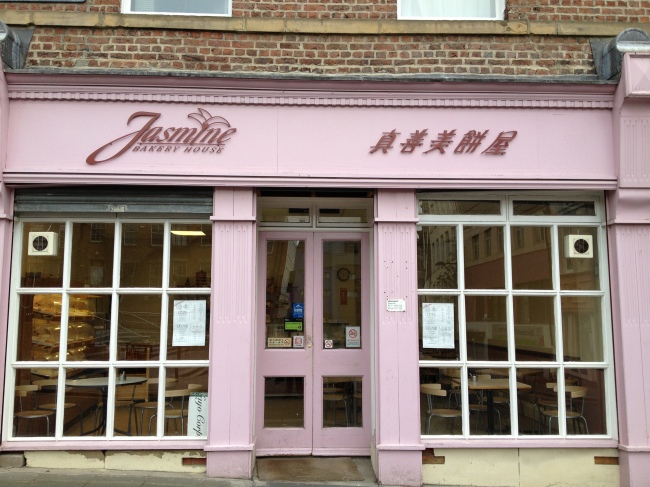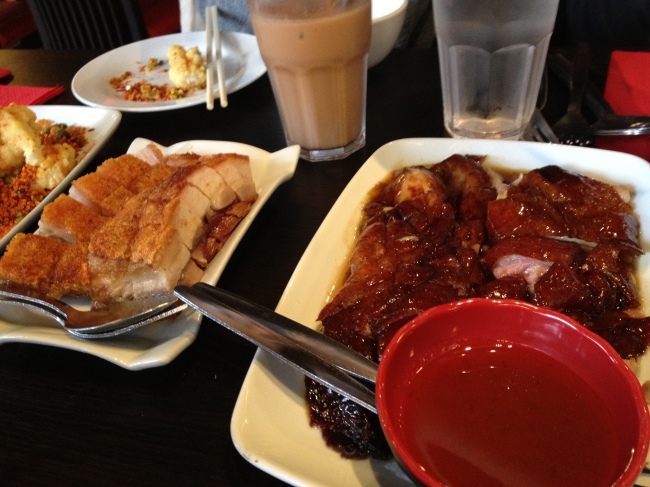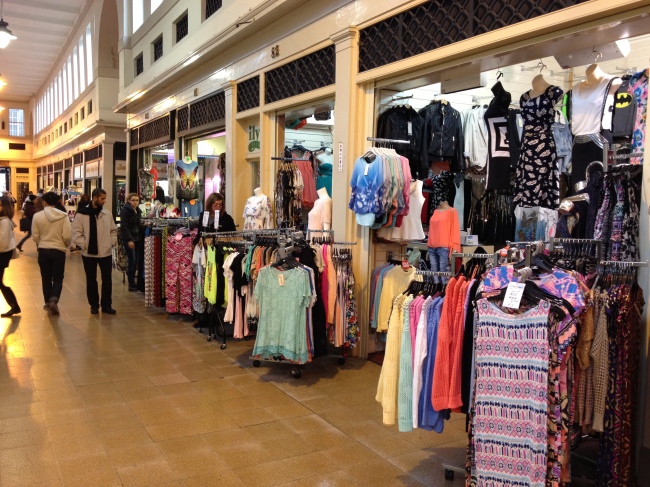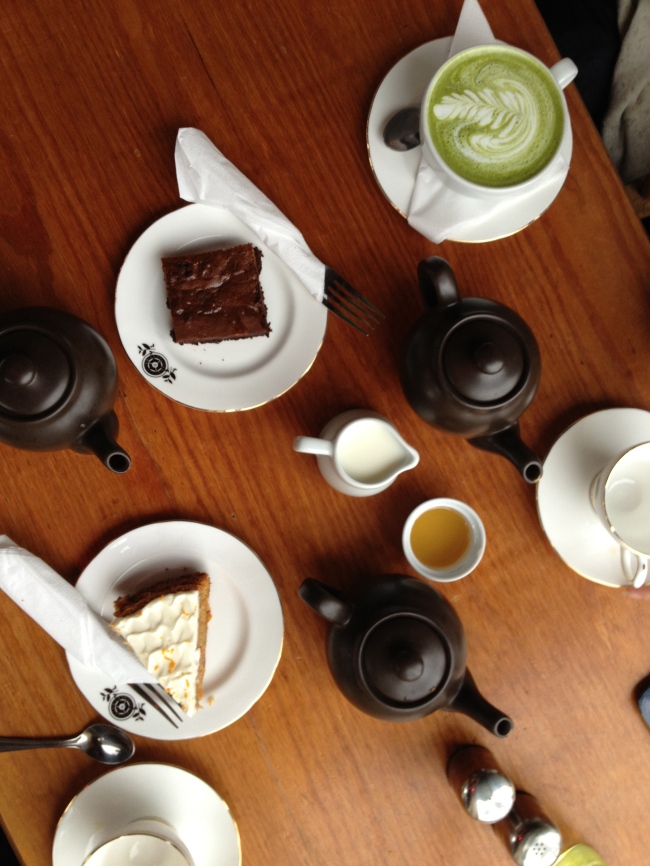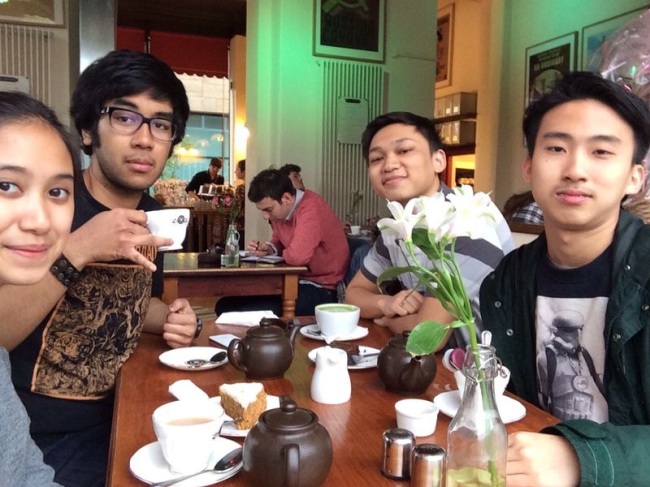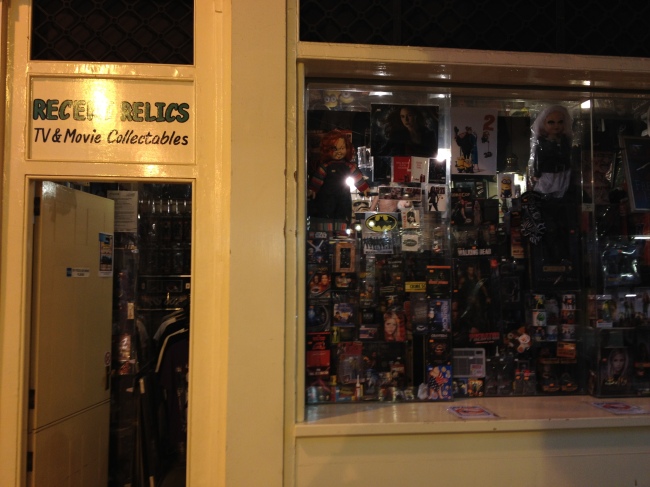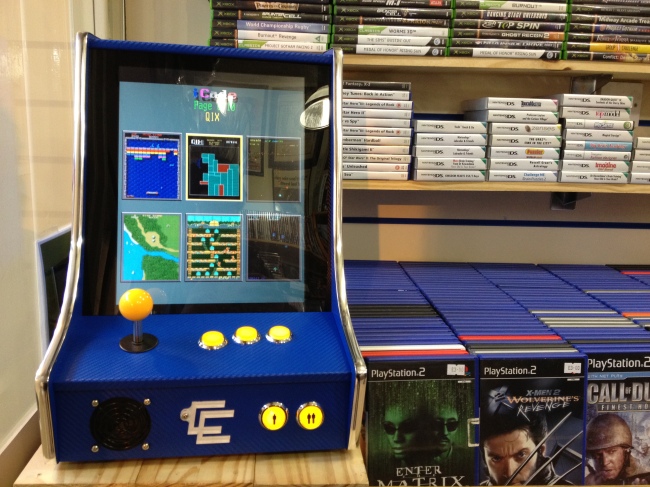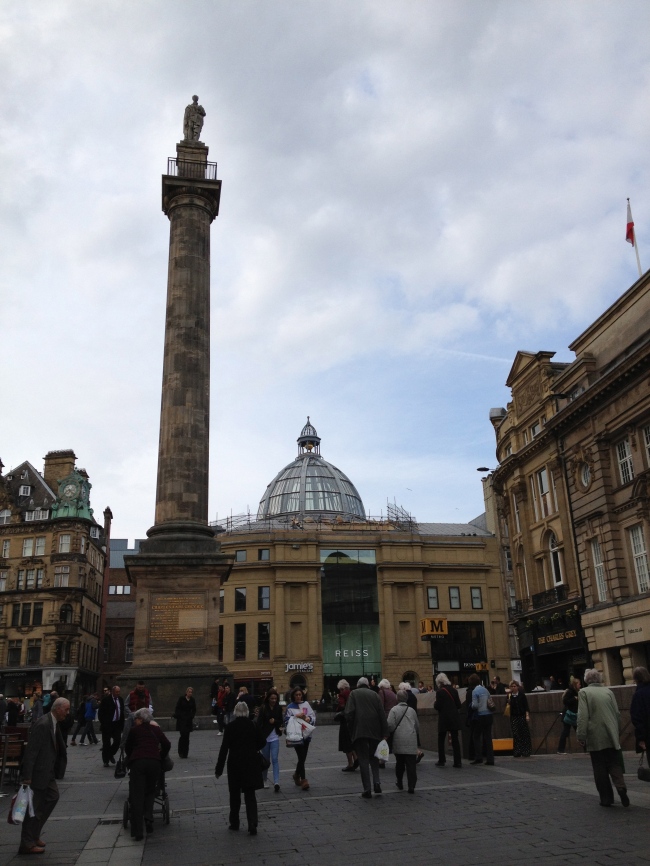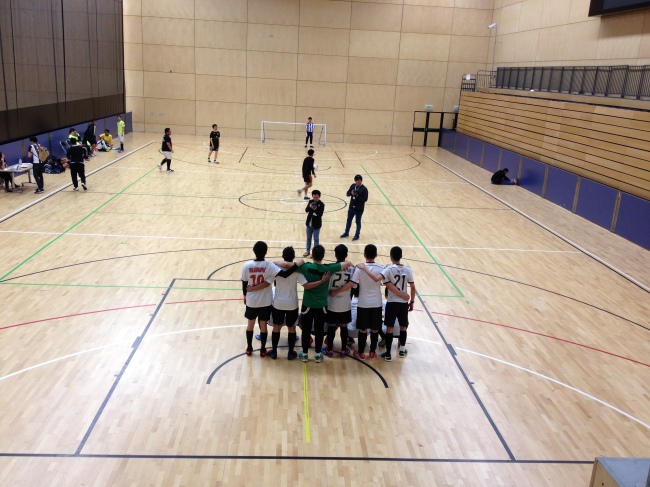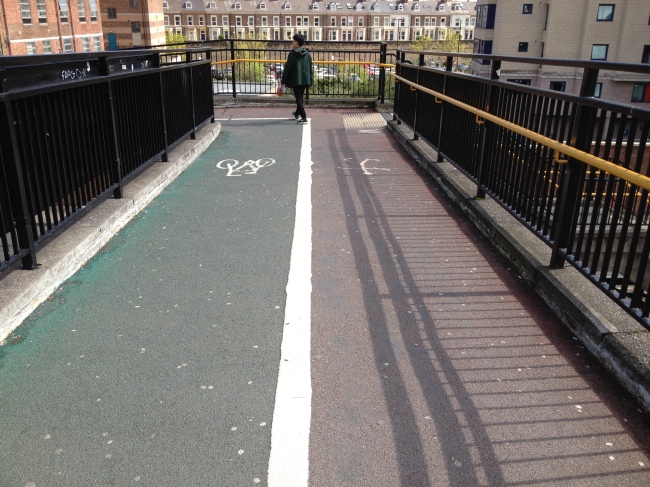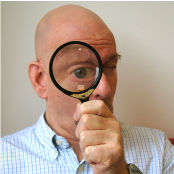
Indonesian version – Click me
In a time where it’s so easy to get information, the important thing to consider is what information do you want to get. We are often bombarded by a lot of information that we do not need, which prevents us from getting what we do need. It also takes a lot of time to organise your digital content subscriptions and collections. To have someone to do the organising sounds like a very neat idea.
The case gets even more complicated in music as the industry is volatile to changes. There’s been a lot of progress in the past few years. The rise of the streaming services, decline of physical sales and the increased number of music being produced as home studio software become more advanced and affordable, are common music headlines. In short, too much stuff is going on in music right now.
Enter Decibel: a London-based music metadata company with the mission of building the largest and most in-depth music database. I had the chance to talk to the start-up’s founder and CEO, Evan Stein, about their ambitious project, the London start-up scene, and some artists which might be of interest to you.
Q: Tell us about the company
A: The idea behind Decibel is to provide an infrastructure, because we’re reaching a point now where physical products are going away. There used to be a time when you could look at a record cover and read about what you’re listening to, or to find out about it before you bought it.
You would also have beautiful art, but when you turn them into a CD it shrinks. And then you turn them into a digital file and it disappears altogether.
So, if you’re listening to a file somebody sent you, what are you really listening to? Is it The Beatles? Is it a cover band who sound exactly like The Beatles? The context means a lot.
At first I thought it would be interesting to have the information from the cover inside the musical file. Then the project grew a great deal. It turns out that when you put the information inside the computer, you can do things with it that you wouldn’t be able to do before. So the product we’re working on now is much better than the one I had imagined at the beginning. Let’s say you have a record collection and you have all these bits of sleeve notes and information on each album but they’re not really talking to each other. When you put them inside the computer you can say ‘okay, I want all the people who played this song’ or ‘everything this bass player did’. So you can aggregate the search, and it is quite interesting.
Q: What initially drove you to start the company?
A: The strongest driving factor was that I had 5000 CDs at home and I couldn’t find what I was looking for. The computer is the ultimate search machine and I made a rule for myself that this large collection had to be digitised before I was allowed to listen to it anymore. The CDs that come into the house get digitised and I get data out of it.
Taking it farther, if you think about large collections it could be my large collection, it could be a store, or something online like a streaming service, and you want to be able to get through these things very quickly and get to exactly what you want. If you have searches, indexes and things like that, you go right exactly to what you’re looking for or something that’s like what you’re looking for instead of standing on a chair and saying ‘oh, I just need one more minute’ or ‘oh, damn, I can’t find it, bear with me’. So the computer is the perfect tool.
Q: A lot of people are more familiar with sites like Allmusic and Discogs that also provide music data. What makes your company different?
A: We furnish our own API, which means that people can write their own applications and do whatever they want to do with the music information.
There are sites like Allmusic that are very editorial-based and you can read a lot about the music. The thing is, when you’re dealing with data as pure data, which is what we do, they can be translated into multiple languages. You don’t necessarily have to speak English to reap the full benefit. There’s a market out there of people who would rather just read in their own language, or to not have to read-read-read to get to what they’re looking for. We use the search information for navigation and the thing is the thing. What I mean by that is let’s say your name is Joe Smith and there’d be 50 people with that name but we know who each of those is and if you’re looking for that name in Chinese, we can translate it into Chinese. It becomes much more computerised.
Allmusic is wonderful. It’s a port of the coffee table book that you used to have, the really nice big beautiful Allmusic guide that you buy in the bookstore. They did a really terrific job porting it to the web. But on the other hand you have to know English to read it. These are two of the issues we solve: fast navigation and translation into multiple languages.
Q: When digital music wasn’t as prevalent as now, what convinced you that music metadata is valuable? And what makes you think that other people can be convinced as well?
A: First of all, I didn’t need to be convinced. I used to work at the Library of Congress in the music archive. This is kind of my life. As a musicologist, just looking at things and trying to find out more about them is really important. One of the main functions of learning about music is that you learn about it. It’s very important where it came from, what you’re listening to, and all that information.
I think metadata is more critical now because physical CDs are disappearing. You really need some kind of a guide to tell you what it is and metadata is the thing that guides you along so you can find what you’re looking for. If you can’t find what you’re looking for you can’t listen to it. I just came to the opinion that this will become more important as more of the tracks went digital. And sure enough there’s plenty of websites and people who are interested in metadata.
Q: Tell us about the start-up culture in London
A: London has a fairly vibrant start-up scene for Europe. The only thing is that the investors in Europe are more cautious than the ones in the US. They’re much less willing to take risks.
You have to be a lot more focused if you’re working in London. But certainly a lot of people come from all parts of Europe to be here and you could go out every night of the week for a start up event and you don’t have to do any work. You can just go from event to event.
Q: Is there a culture of collaboration between start-ups or is it mainly just one company minding their own business?
A: There’s a lot of networking. You can never do everything all by yourself. My job at the beginning was not to only share the idea with people but also to put together a company. So there were various events that I would go to. Some of them have a lot of people who look cool, you know, they go to these events to look cool but they have no particular start-up in mind. They just think that it’s a cool thing to do and a nice way to pass a Friday evening. And other people are very, very focused. You tend, after a while, though, to not go to start up events anymore because running a company is running a company. It takes a lot of time. It takes all your time and a little bit more.
Q: About your main product, can you tell us the ways in which your API has been used?
A: The main use of the API would be if you’re selling or playing or streaming MP3s. People want this kind of store-front. You used to go the record store and you would find a skinny guy in a t-shirt who will tell you all about the records. There’s no such thing as record stores anymore. Almost. The people in record stores are seemingly less and less thrilled to be working in record stores. If you ask ‘so, what’s this record?’ they’ll say ‘well, some people like it, some people don’t.’ That’s kind of like fortune telling. Not very helpful.
The thing is, there are several ways you can get information on music. One is by recommendation, some social graphs on things like Amazon. For example the last 50 people who bought this album bought this next album, so you can try it. If you’re social and similar enough to everybody in their sample, that’d be good.
And then the other way of doing [finding information about music] is by doing your own research. People who are into specific types of music, let’s say metal, they know what they want pretty much but they wanna know it’s available and that’s particularly helpful. So in specialist websites people can use the Decibel search engine, come up with a track, pair it with their inventory and you can download it. So that’s one of the uses of the API.
The API is also used for research applications, for instance cataloguing. We have an application at the British Library where people are cataloguing their own collection. They do that quite a lot and they use our information to find out more about their own properties without having to type these things in.
There are additional uses that haven’t been tapped yet. Things like digital radio, so something’s playing on the air and you ask ‘oh, who’s that playing the bass?’
One of the great things about having an API is that if somebody has an idea for using all of this information in their app, they do something called ‘white labelling’. It looks like their application but it’s really ours inside. It’s just one more building block that they use.
People can do anything they can imagine. Actually, one of the most difficult jobs we have is telling people what they can imagine because you don’t just create something from nothing. A lot of the stuff that we do is devoted to giving people ideas on what they can do with our API.
Q: I read in an interview with StrategyEye Digital Media that your API is also used to distribute royalties. Can you tell us about that too?
A: Ah, what do you know. Sorry I forgot.
Well, another use of the API is, y’know, we know who performed on what track and this is very, very interesting for certain people like agents who work for performers. Some of the jobs they do is to help with concerts and things like that but also something like ‘ah, I represent Lady Gaga and she played the tuba on these 14 tracks. Give me my money!’ They make sure that the musicians are getting paid.
One of the lines of business we have is that people get paid because we can tell the royalty agencies what tracks people actually played on because we break down music into that type of detail. We want to know every thing in the session and we want to know what the supporting person did. We want to know what they did under this name or their aliases. So yeah, people are using Decibel API to collect royalties that their clients deserve.
Q: What’s the most surprising use of the API that you have seen?
A: At Hackatons we had this thing where you put your birthday to find the artists you share the birthday with. We’re looking into all kinds of stuff now. The night is young. For instance, we’re excited about using GPS and phone apps where you can pass by a building and ask ‘hmm, was there a music here?’ And you know, 20 paces down the line Jimi Hendrix used to live there or something. That is altogether possible. Hopefully people are gonna start surprising us.
Q: Tell us a bit about your office. What kind of culture do you have here?
A: We have a room full of smart people. And smart people like to be smart. We work a lot with consensus. People get to take individual areas of responsibility and people are encouraged to take responsibilities for things. For example, we have a guy named Paul who’s working on classical music. He’s mapped out the plan and he’s going ahead with it. He’s got a degree from Cambridge in musicology and the guy knows what he’s doing. So, y’know, leave him alone. Let him get on with the job.
Everybody here in this room, unless I’m mistaken, is pretty super. They don’t need guidance.
Q: Can you name your Top 5 records? If it’s too much then you can do it genre-wise, or sub-genre-wise.
A: Well my genres are generally jazz, classical and the insultingly-named ‘world music’.
One of my favourite records, and this is totally arbitrary, is Ella Fitzgerald’s ‘Pure Ella’. I can’t listen to it enough. If I listen to it 100 times a day I wouldn’t get enough of it. It’s just voice and piano.
I like Fats Waller very, very much. Who else do I like? I like many things that I don’t even know where to start. Thelonious Monk….. I’m just talking about jazz at this point. John Coltrane is totally amazing. Yeah, don’t get me started [laughs].
Q: What do you want to see in Decibel in the future?
A: What I want to see in Decibel is when we no longer do only popular music but we’re doing music that people wouldn’t find in any other search engine or information service. If you take a country like Jamaica, where people used to just go to the beach, but through very, very careful marketing, reggae is now one of the most popular types of music in the world. People sleep all day so they can go to the club at night to hear music. I would love to do that with some of the other countries that are musical powerhouses. To take a small example of the country of Indonesia, which has this amazing music which not enough people hear. Or places like Senegal where it’s just an amazingly musical culture. Or Brazil. To help out in that way so that more of the local musicians show up in the search engine and some really good music get into the ‘mix of everywhere’ regardless of language or national barriers. That’s far off but that’s one of the things I’d like to see.
Q: Finally, do you have any advices for start-ups?
A: In terms of people starting companies, they should. In the US people have a very good attitude. If the company flops, they just pick themselves up and start another one. It’s always good to have a good idea. It’s also good to have a product that people like.
It’s not about selling. A lot of people are very pompous that they ask ‘oh, what’s your exit strategy?’ With this company I have no exit strategy. I don’t want to sell the company. I’m so happy working here and I hope this goes on for a long time until I’m too senile to do anything else. Basically enjoy what you’re doing. Do something that nobody else has done and you’ll be alright.
//
See?

Saat mendapatkan informasi adalah hal yang luar biasa mudah sekarang, sangatlah penting bagi kita untuk menimbang informasi apa yang ingin kita terima. Sering kali kita dibombardir oleh informasi-informasi yang tidak kita butuhkan, sehingga kita malah tidak sampai ke tujuan yang kita mau. Menyusun layanan konten digital juga memakan waktu. Memiliki seseorang yang mau menyusunnya untuk anda terdengar seperti ide yang baik.
Kasusnya menjadi semakin rumit di industri musik yang sangat mudah berubah-ubah. Ada banyak sekali perkembangan di beberapa tahun terakhir. Bangkitnya layanan streaming, menurunnya penjualan produk fisik musik dan meningkatnya pemakaian software yang membuat proses produksi musik menjadi lebih mudah dan murah hanyalah sebagian dari berita-berita terkini soal musik. Intinya, industri musik sedang ramai-ramainya.
Masuklah Decibel: perusahaan metadata musik bermarkas di London yang memiliki misi untuk membangun database musik yang paling lengkap dan mendetil. Saya berkesempatan untuk berbincang dengan penemu dan CEO start-up ini, Evan Stein, mengenai proyek ambisiusnya, skena start-up di London, dan juga beberapa musik yang menarik.
Q: Bisa ceritakan apa itu Decibel?
A: Ide dibalik Decibel adalah untuk menyediakan infrastruktur karena kita sudah mencapai titik di mana produk fisik musik semakin berkurang. Dulu ada masanya di mana kita bisa melihat sampul rekaman dan membaca tentang apa yang akan kita dengarkan, atau mencari tahu mengenai rekaman tersebut sebelum membelinya. Dulu rekaman juga mempunyai gambar di sampul yang indah. Saat formatnya berubah menjadi CD, gambar tersebut mengecil. Kini saat kita mengubah rekaman menjadi format digital, gambar tersebut hilang seutuhnya.
Jadi, bila seseorang mengirimkanmu sebuah file, apakah yang sebenarnya anda dengarkan? Apakah itu The Beatles? Apakah itu cover band yang sangat menyerupai The Beatles? Konteks sangatlah berarti.
Pada awalnya saya rasa memindahkan informasi-informasi seputar musik yang saya dengarkan ke dalam file adalah hal yang menarik. Dari situ proyeknya berkembang pesat. Ternyata saat saya memasukkan informasinya ke dalam komputer, saya dapat melakukan hal-hal yang tidak dapat saya lakukan sebelumnya. Jadi produk yang kami kerjakan sekarang jauh lebih baik dari yang saya bayangkan pertama kali.
Misalnya anda punya koleksi album yang masing-masing memiliki liner notes, mereka tidak berbicara satu dengan yang lain. Namun saat anda memasukkannya ke dalam komputer anda dapat bilang ‘oh, saya ingin cari semua orang yang memainkan lagu ini’ atau ‘semua yang pernah basis ini lakukan’. Pencariannya menjadi lebih menarik.
Q: Apa yang pertama kali mendorong anda untuk mendirikan perusahaan ini?
A: Alasan terkuat adalah koleksi 5000 CD saya di rumah dan saat itu sulit sekali untuk mencari apa yang ingin saya dengarkan. Komputer adalah alat pencarian terampuh dan saya membuat aturan untuk diri saya sendiri bahwa saya harus memindahkan koleksi saya ke dalam perpustakaan digital sebelum saya mendengarkannya. Setiap CD yang dikirim ke rumah saya digitalkan dan saya menyarikan data darinya.
Kalau anda bicara soal koleksi yang besar, koleksi tersebut bisa koleksi pribadi saya, atau koleksi toko, atau koleksi daring seperti layanan-layanan streaming, dan anda ingin bisa menyusuri koleksi tersebut secepat mungkin agar dapat menemukan apa yang anda cari. Jika anda punya alat pencari seperti indeks, anda dapat sampai persis di tempat yang anda inginkan dan bukannya malah berdiri di atas kursi sambil berkata ‘oh, beri saya satu menit lagi’ atau ‘sial, saya tidak bisa menemukannya, mohon tunggu sebentar’. Jadi, komputer adalah alat yang hebat.
Q: Banyak orang lebih mengenal situs-situs seperti Allmusic dan Discogs yang juga menyediakan data musik. Apa yang membuat Decibel berbeda?
A: Kami membangun sebuah API yang dapat orang lain gunakan untuk menciptakan aplikasi-aplikasi yang memanfaatkan data musik kami dengan cara apapun.
Situs-situs seperti Allmusic sangat berbasis redaksi. Masalahnya, saat anda berurusan dengan data sebagai data murni, seperti yang kita lakukan, mereka dapat diterjemahkan ke dalam banyak bahasa. Anda tidak perlu fasih berbahasa Inggris agar bisa mendapat manfaatnya. Ada pasar di luar sana yang ingin bisa membaca informasi tersebut dalam bahasa mereka sendiri. Datanya adalah datanya. Maksud saya adalah, misalnya namamu Joe Smith, bisa jadi ada 50 orang lain lagi dengan nama yang sama dan kita tahu siapa saja mereka. Bila anda ingin mencari nama tersebut dalam bahasa Mandarin, kami bisa menerjemahkannya ke dalam bahasa Mandarin.
Allmusic itu luar biasa. Ia adalah wujud baru dari buku panduan oleh Allmusic yang dulu biasa kita beli di toko. Mereka memindahkan buku tersebut ke dalam Internet dengan sangat baik. Namun anda harus bisa berbahasa Inggris untuk membacanya. Selain navigasi cepat, inilah isu lain yang kami pecahkan: penerjemahan data ke dalam berbagai bahasa.
Q: Saat musik digital belum se-dominan sekarang, apa yang menyakinkan anda bahwa metadata musik itu berharga? Dan apa yang membuat anda berpikir orang lain bisa diyakinkan juga?
A: Pertama-tama, saya tidak perlu diyakinkan. Dulu saya bekerja di pengarsipan musik Library of Congress. Inilah hidup saya. Sebagai seorang musikolog, mengamati sebuah rekaman dan mencari tahu lebih banyak mengenainya adalah hal yang penting. Salah satu fungsi mempelajari musik adalah anda dapat belajar mengenainya. Dari mana rekaman itu berasal, apa yang anda dengarkan, dan informasi-informasi serupa lainnya sangatlah penting.
Saya rasa metadata menjadi lebih penting sekarang karena CD benar-benar menghilang. Anda butuh sebuah pemandu untuk memberi tahu apa yang ingin anda dengarkan dan metadata mampu melakukannya. Jika anda tidak tahu apa yang ingin anda dengarkan, maka anda tidak dapat mendengarkannya. Saya beranggapan saja bahwa metadata akan menjadi sangat penting karena semakin banyaknya lagu yang berwujud digital. Dan ternyata cukup banyak juga orang-orang yang tertarik dengan metadata.
Q: Bisa ceritakan mengenai skena start-up di London?
A: Di Eropa, London adalah salah satu kota yang memiliki kultur start-up yang cukup hidup. Salah satu hal yang mencolok bagi saya adalah bagaimana investor-investor di Eropa lebih waswas dibandingkan dengan investor Amerika. Mereka kurang berani untuk mengambil resiko.
Anda harus lebih fokus bila bekerja di London. Namun tentu saja ada banyak orang dari segala penjuru Eropa yang datang ke sini, sehingga anda bisa pergi setiap malam ke acara start-up dan tidak usah bekerja sama sekali. Anda tinggal melompat dari satu acara ke yang lain.
Q: Apakah ada budaya kolaborasi antar start-up yang hidup di London?
A: Ada banyak sekali networking. Anda tidak akan mampu melakukan segala sesuatu sendiri. Pekerjaan saya bukan hanya membagikan ide saya dengan orang-orang yang tertarik, namun saya juga harus membangun sebuah perusahaan. Maka dari itu ada berbagai acara yang harus saya datangi. Di beberapa acara ada orang-orang yang datang hanya untuk terlihat keren namun mereka tidak memiliki ide start-up sama sekali. Mereka menganggap acara-acara tersebut sebagai sarana yang keren untuk menghabiskan malam Sabtu. Di saat yang bersamaan ada juga orang-orang yang sangat, sangat fokus dengan apa yang mereka lakukan.
Setelah periode waktu tertentu, anda tidak pergi ke acara-acara ini lagi. Menjalankan sebuah perusahaan memakan seluruh waktu anda.
Q: Mengenai produk utama anda, bisa jelaskan bagaimana API anda digunakan?
A: Fungsi utama API Decibel adalah bagi anda yang ingin menjual, mencari dan mendengarkan MP3. Dulu saat anda pergi ke toko rekaman anda akan menemukan seorang penjaga toko kurus yang akan menjelaskan kepada anda segala hal mengenai rekaman tersebut. Sekarang toko rekaman sudah tidak ada lagi. Hampir lenyap semuanya. Orang-orang yang kini bekerja di toko rekaman terlihat semakin tidak semangat dalam menjalani tugasnya. Bila anda bertanya ‘jadi, album ini seperti apa?’ mereka akan menjawab ‘beberapa orang menyukainya, dan beberapa orang tidak.’ Itu seperti membaca ramalan, sangat tidak membantu.
Ada beberapa cara untuk mendapatkan informasi soal musik. Cara pertama adalah melalui rekomendasi, seperti yang dilakukan oleh website seperti Amazon. Misalnya 50 orang terakhir yang membeli album ini membeli album yang berikutnya. Bila anda cukup mirip dengan orang-orang di sampel itu, ada kemungkinan anda akan menikmati album tersebut.
Cara yang berikutnya adalah dengan melakukan riset sendiri. Orang-orang yang menikmati jenis musik yang spesifik, seperti metal, sudah tahu apa yang mereka inginkan. Namun mereka ingin tahu apakah yang mereka cari tersedia. Maka di website-website spesialis pengunjung dapat menggunakan alat pencarian Decibel untuk mencari lagu dan mengunduhnya. Itulah salah satu fungsi API kami.
Fungsi berikutnya adalah untuk keperluan riset dan penyusunan katalog. Kami memiliki aplikasi di British Library yang membantu orang menyusun katalog koleksi musik mereka. Informasi yang kami sediakan memampukan mereka untuk mengenal lebih dalam properti mereka sendiri.
Ada banyak sekali sarana yang belum dijelajahi, contohnya radio digital. Misalnya anda mendengarkan sebuah lagu di radio dan bertanya ‘oh, siapa itu yang memainkan bass-nya’, anda bisa mencari jawabannya.
Salah satu hal terbaik dari memiliki sebuah API adalah jika seseorang punya ide untuk menggunakan semua informasi yang kami punya, mereka akan melakukan sesuatu yang disebut ‘white-labeling’. Dari luar terlihat seakan-akan mereka yang menciptakan keseluruhan aplikasi tersebut, namun sebenarnya ada kami di dalamnya. API kami menjadi seperti salah satu balok yang mereka susun.
Orang-orang bisa menciptakan apa saja yang mereka bisa bayangkan. Sebenarnya, salah satu pekerjaan tersulit kami adalah memberi tahu klien-klien kami apa yang mereka bisa lakukan.
Q: Saya baca wawancara anda dengan StrategyEye Digital Media yang menyebutkan bahwa API anda juga dipakai untuk membagi-bagikan royalti. Bisa jelaskan mengenai itu?
A: Ah, iya. Saya lupa.
Benar, karena kami mempunyai data mengenai siapa yang berpartisipasi dalam sebuah lagu atau rekaman, orang-orang seperti agen yang bekerja untuk musisi tertarik untuk menggunakan API kami. Mereka bisa berkata ‘ah, saya yang mewakili Lady Gaga dan ia memainkan tuba di empat belas lagu ini. Berikan uang saya!’ Mereka memastikan para musisi menerima bayaran.
Decibel menjalani jalur bisnis ini karena kami mampu memberi agen pengumpul royalti informasi yang luar biasa mendetil. Kami ingin tahu semua hal yang terjadi pada sesi rekaman dan apa saja yang setiap peran lakukan. Kami ingin tahu apa yang musisi ini lakukan di bawah nama aslinya atau di bawah nama samaran. Jadi begitu, orang-orang memakai API Decibel untuk mengumpulkan royalti bagi mereka yang layak menerimanya.
Q: Apakah aplikasi API Decibel yang menurut anda paling menarik?
A: Di Hackathon (ajang di mana para programer berkolaborasi dalam menciptakan beragam macam software atau aplikasi), kita sempat melihat aplikasi yang memampukan anda mencari tahu musisi-musisi mana saja yang lahir di hari yang sama dengan anda.
Kami tertarik dengan banyak hal. Malam masih panjang. Contohnya, kami tertarik untuk memakai GPS dan aplikasi telepon yang bisa anda pakai saat melewati sebuah gedung dan bertanya ‘hmm, apakah pernah ada musik di sini?’ Dan ternyata, 15 meter ke depan ada tempat yang pernah ditinggali Jimi Hendrix. Hal ini sangat mungkin terjadi. Saya harap orang-orang akan mulai mengejutkan kita dengan kreasi-kreasinya.
Q: Ceritakan mengenai kantor anda. Budaya seperti apa yang kantor anda milikii?
A: Kantor kami diisi oleh orang-orang pintar. Dan orang-orang pintar suka bersikap pintar. Setiap orang diharapkan untuk mengambil tanggung jawab untuk bidang mereka masing-masing dan bekerja atas dasar kesadaran mereka sendiri. Sebagai contoh, ada Paul yang mengepalai proyek musik klasik. Ia sudah memetakan rencananya dan ia sedang mengerjakannya. Ia memiliki gelar S2 musikologi dari University of Cambridge dan ia tahu apa yang ia lakukan. Jadi, biarkan saja dia melakukan pekerjaannya.
Setiap orang di ruangan ini, bila saya tidak keliru, cukup super. Mereka tidak butuh bimbingan.
Q: Bisakah anda menyebutkan 5 album favorit anda? Bila terlalu sulit anda bisa melakukannya berdasarkan jenis musik.
A: Musik yang biasa saya dengarkan adalah jazz, musik klasik dan ‘musik dunia’ – yang menurut saya menyandang nama yang menghina.
Salah satu rekaman favorit saya, dan ini benar-benar spontan, adalah ‘Pure Ella’ oleh Ella Fitzgerald. Saya tidak akan bisa puas mendengarkannya. Jika saya mendengengarkannya seratus kali dalam sehari, itu masih belum cukup. Rekaman tersebut hanya berisi vokal dan piano.
Saya sangat, sangat suka Fats Waller. Siapa lagi yang saya suka? Saya suka banyak sekali hal sampai saya tidak tahu harus mulai dari mana. Thelonious Monk… Saya hanya bicara soal jazz sekarang. John Coltrane sangatlah luar biasa. Yah, jangan pancing saya [tertawa].
Q: Ke depannya, apa yang ingin anda lihat di Decibel?
A: Saya ingin melihat Decibel mengerjakan proyek-proyek di luar musik pop, yakni musik-musik yang tidak biasa orang temukan melalui alat pencari di Internet. Mengambil contoh negara seperti Jamaika, di mana orang biasa mengunjunginya untuk pergi ke pantai, namun melalui pemasaran yang hati-hati reggae kini menjadi salah satu jenis musik paling populer di dunia. Orang-orang tidur seharian supaya bisa pergi ke klub di malam hari untuk mendengarkan musik. Saya ingin mendorong negara-negara lain yang juga memproduksi banyak musik bagus. Mengambil contoh kecil, Indonesia memiliki musik-musik luar biasa yang tidak banyak orang ketahui. Atau tempat-tempat seperti Senegal yang mempunyai budaya musik yang luar biasa. Atau Brazil. Saya ingin membantu musisi-musisi lokal tersebut untuk muncul di alat pencarian daring dan berbaur dengan musik-musik lain tanpa memandang batasan bahasa atau negara. Perjalanan masih jauh, namun saya ingin lihat itu terjadi.
Q: Terakhir, ada masukan bagi mereka yang mau memulai sebuah start-up?
A: Orang-orang harus membuka usaha mereka sendiri. Di Amerika, mereka memiliki sikap yang sangat baik. Bila perusahaannya gagal, mereka langsung bangkit dan memulai usaha baru. Sangatlah baik untuk punya ide yang hebat. Dan sangat baik juga bila kita bisa menciptakan produk yang orang lain suka.
Menjalani Decibel bukan berarti ingin menjualnya nanti. Banyak orang bertanya ‘apakah strategi jalan keluarmu?’ Saya tidak punya jalan keluar. Saya tidak mau menjual perusahaan ini. Saya sangat bahagia bekerja di sini dan saya harap ia akan tahan lama hingga saya sudah menjadi terlalu pikun untuk melakukan banyak hal.
Pada intinya, nikmatilah apa yang anda kerjakan. Lakukan sesuatu yang belum pernah orang lain lakukan dan anda akan baik-baik saja.
